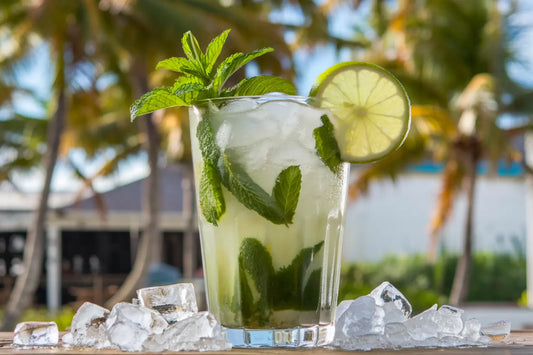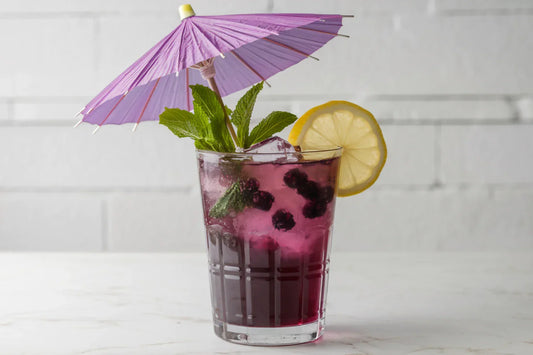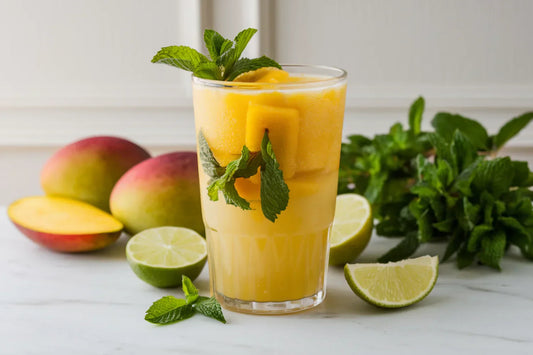How to Use a Cobbler Shaker: A Complete Guide
BarNeedThe cobbler shaker is one of the most classic tools in bartending, and its convenient design allows bartenders of any skill level to easily mix cocktails. In our blog “What is a Cobbler Shaker? Everything You Need to Know,” we explored its definition, origins, and styles to give you a comprehensive understanding of it. Today, we will continue to delve into how to use it, helping you master its techniques even better.
Jump to:
- Structure of the Cobbler Shaker
- How to Use a Cobbler Shaker
- How to Prevent and Solve Sticking Issues
Structure of the Cobbler Shaker
Before we begin, it's essential to understand its structure. The cobbler shaker features a three-piece design, which is why it is also called a three-piece shaker. It consists of a main body, a lid with a built-in strainer, and a cap.
- Main Body: When used alone, the main part can serve as a mixing glass or as a container for muddling herbs, fruits, and other ingredients.
- Lid with Built-in Strainer: As a core highlight, the built-in strainer simplifies your bartending operations, eliminating the need for a Hawthorne or Julep strainer.
- Cap: Typically designed with a measuring function for 1 oz (30 ml) of liquid, it helps you quickly measure each ingredient.
Additionally, its capacity and volume are smaller compared to the Boston shaker, making it easier to use. The streamlined appearance not only gives it an elegant look but also provides a more comfortable grip.

How to Use a Cobbler Shaker
After understanding its structure and functionality, you only need to follow the steps below and practice a few times to master drink mixing. Let’s get started!
Step 1: Choose any cocktail you want to make and prepare the necessary base spirits, fruits, herbs, and other ingredients.
Step 2: Use the cap of the shaker to measure each liquid ingredient, ensuring a perfect ratio. Of course, if you seek precision, you can use a jigger for measuring.
Step 3: In the main body, add all the ingredients along with an appropriate amount of ice. Typically, fill the shaker about 3/4 full with ice, which will allow the drink to cool quickly without being overly diluted. You can adjust this based on your personal preference.
Step 4: Assemble the lid, cap, and main body. When assembling, try to avoid pressing the parts too forcefully; let them close naturally to prevent difficulty in opening later.
Step 5: Hold the shaker in one of two ways:
- Two-Handed Grip: One hand holds the bottom while the other holds the top. This common and stable method helps prevent the lid from loosening while shaking.
- One-Handed Grip: Use one hand to hold the connection between the body and lid, pressing the cap with your index finger. This method offers more flexibility.
Step 6: Tilt the shaker at a 45-degree angle. This angle allows the ice to have a broader contact area with the liquid, ensuring even cooling and dilution for a better mixing effect.
Step 7: Shake for 10-15 seconds. Shaking for too long can lead to excessive dilution of the drink, while shaking for too short a time may prevent the ingredients from fully blending.
During shaking, different intensities can produce different effects:
- Gentle Shaking: A slower shaking frequency and lighter pressure can maintain the drink's rich flavor.
- Strong Shaking: A high frequency and vigorous shaking can balance strong alcoholic flavors and enhance cooling.
The choice depends on the drink's recipe and your personal preference. With practice over time, you can adjust the intensity based on different cocktails.
Step 8: Remove the cap and pour the cocktail into your glass. The built-in strainer will strain out ice and other solid components, ensuring a smooth texture.
Congratulations! You’ve mastered how to use the cobbler shaker, bringing you one step closer to becoming a cocktail master!

How to Prevent and Solve Sticking Issues
I hope you haven't rushed to close the webpage to practice cocktail mixing yet, because now we need to discuss one of the most frustrating issues with the cobbler shaker—sticking.
First, let’s understand why it can easily get stuck:
- Three-Piece Design: Yes, the three-piece structure is an advantage, but it also has its drawbacks. While it allows for a tight fit, it can also make it difficult to separate in certain situations.
- Condensation from Ice: During shaking, the ice causes the metal to cool quickly, which can tighten the lid and cap even further, potentially creating a slight vacuum that makes them harder to remove.
- Improper Handling: Factors such as excessive force when assembling, prolonged vigorous shaking, or accidental bumps and drops that cause deformation or misalignment can lead to sticking.
Using the cobbler shaker correctly can reduce the likelihood of it getting stuck. However, if it does get stuck, don’t panic and try to force it apart violently. Instead, you can try the following methods:
- Use Warm Water: Soak the main body in warm water or gently rinse around the lid with warm water to loosen the stuck parts using the principle of thermal expansion and contraction.
- Gently Twist and Pull: Hold the main body with one hand and the lid with the other, gently twisting the lid back and forth while slowly pulling. This can reduce friction and help gradually loosen it.
- Tap the Shaker: A light tap can help loosen the metal contact points. Be careful to tap gently to avoid damaging the shaker or causing it to stick further.
- Use a Dry Cloth: Wrap a dry cloth completely around the lid, grip the main body firmly, and slowly pull. This can increase friction and ensure a secure grip.
Conclusion
The cobbler shaker, with its simple design and practicality, offers an easy-to-use experience for cocktail mixing, helping you craft everyday drinks with a more professional touch. If you’d like to give it a try, feel free to follow this guide to mix up a drink. We also invite you to share your bartending tips, creative combinations, or practical techniques in the comments section!




